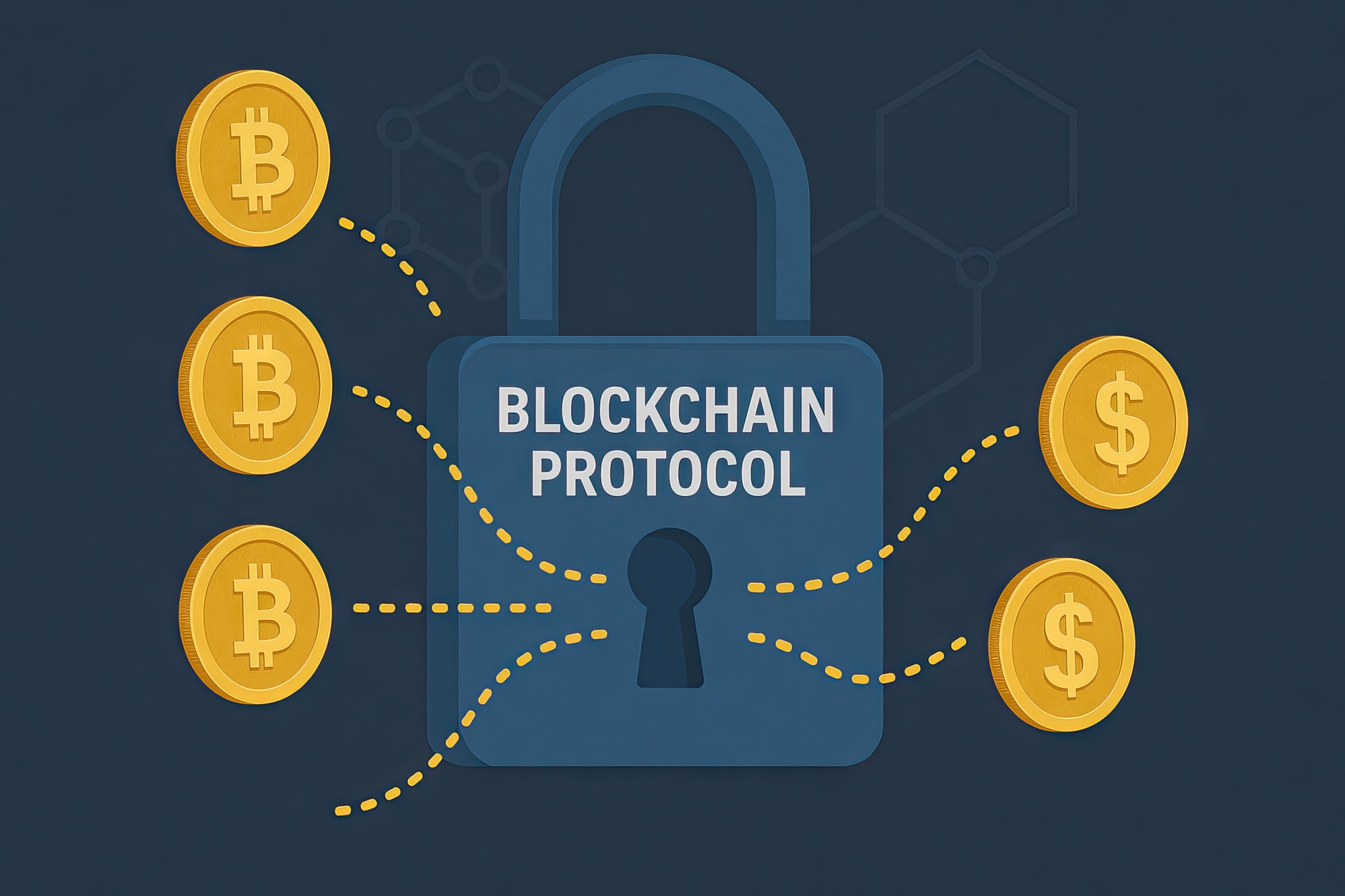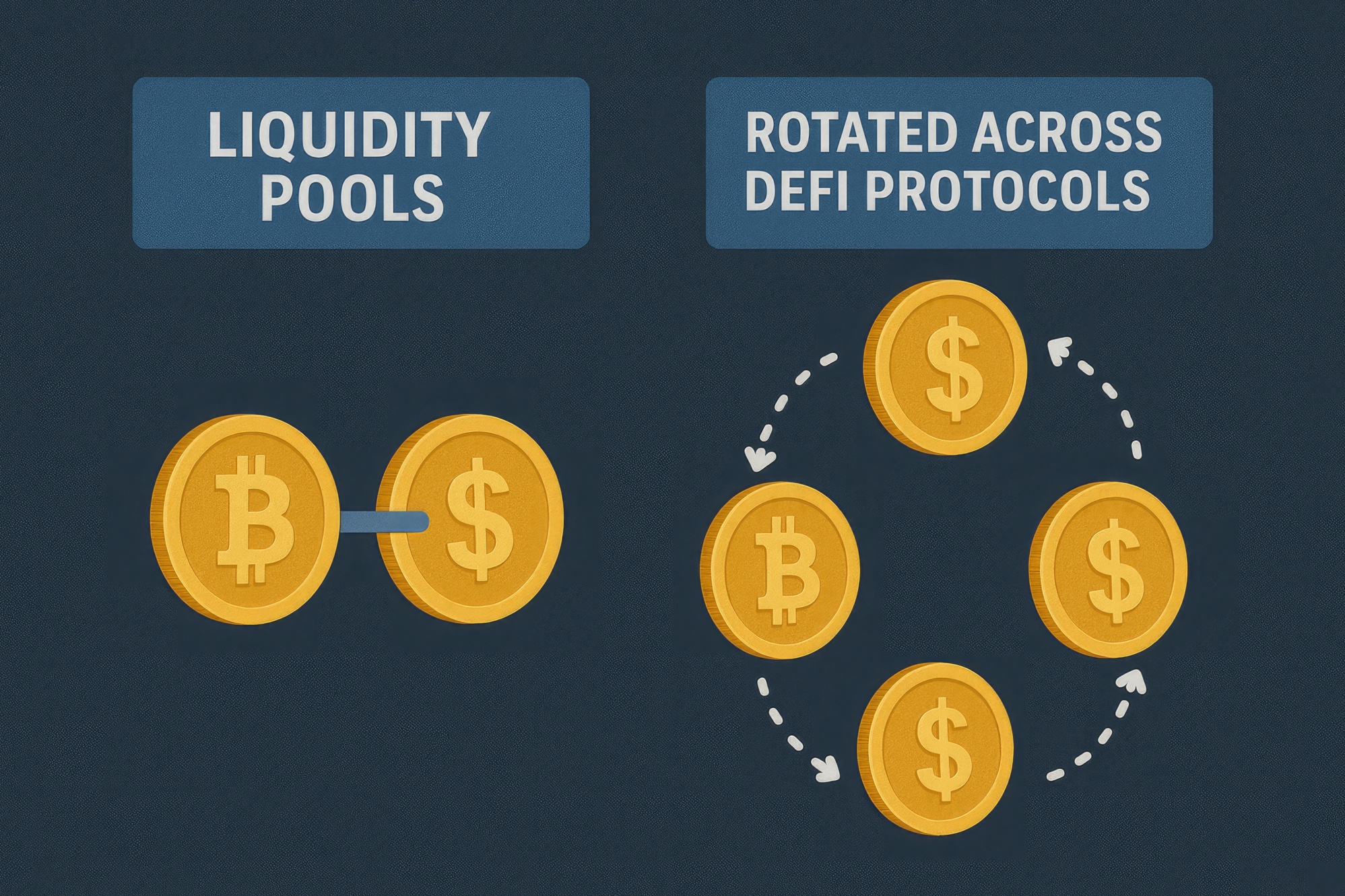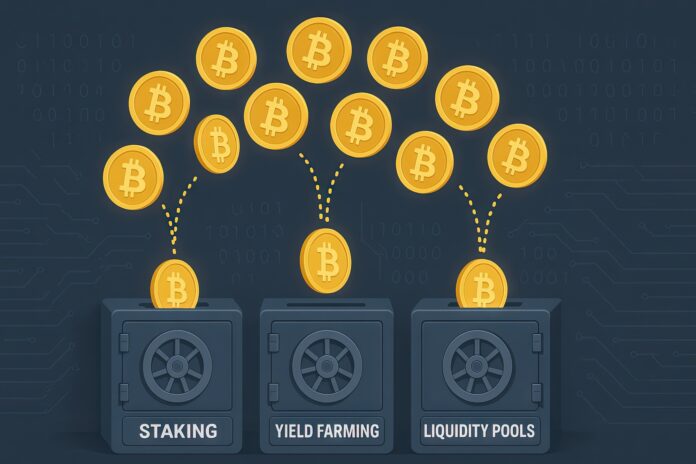Decentralized finance (DeFi) has emerged as one of the most transformative innovations in the blockchain space, offering an alternative to traditional financial systems. Rather than relying on centralized banks, brokers, or financial institutions, DeFi uses blockchain-based protocols to provide financial services such as lending, borrowing, saving, and trading—open to anyone with an internet connection.
At the heart of DeFi are several tools that enable users to earn passive income and participate in decentralized ecosystems. Among the most popular and widely used mechanisms are staking, yield farming, and liquidity pools. These tools allow crypto holders to grow their assets while contributing to the efficiency and security of blockchain networks.
In this guide, we’ll explain these three foundational DeFi concepts in plain language. Whether you’re new to the world of crypto or exploring ways to make your digital assets work harder, this post will equip you with a clear understanding of how each strategy works and what risks to consider.
What Is Staking?
Staking is a foundational concept in DeFi that allows you to earn rewards by helping secure a blockchain network. In essence, it involves locking up your tokens to support the network’s operation, in exchange for periodic rewards.
How It Works
Staking is common in blockchains that use Proof of Stake (PoS) or its variants, such as Delegated PoS (DPoS) or Nominated PoS (NPoS). Instead of relying on energy-intensive mining, these networks depend on validators who stake tokens to confirm transactions and maintain network security.
You can stake your tokens in two primary ways: by running a validator node yourself or by delegating your tokens to a trusted validator. While operating a node can require technical know-how and a significant minimum stake, delegation offers a more accessible entry point for everyday users.

Real-World Example
Imagine you stake 20 ATOM—the native token of the Cosmos blockchain—through a wallet interface or staking platform. These tokens are locked in the network to support operations. In return, you may receive 8–10% annualized rewards, distributed regularly.
Some blockchains also offer liquid staking, allowing you to receive a tokenized version of your staked assets that can be used in other DeFi protocols.
Benefits of Staking
- Earn passive income with relatively low effort
- Contribute to the security and decentralization of the network
- More energy-efficient than mining
- Accessible for beginners via staking platforms
Drawbacks to Consider
- Tokens are typically locked, limiting liquidity
- The value of staked assets may fluctuate
- Slashing penalties may apply if validators act maliciously or make errors
- Some networks impose unbonding periods before you can withdraw funds
What Is Yield Farming?
Yield farming is a strategy used to optimize returns by allocating assets across different DeFi platforms. It’s more complex than staking but offers greater potential returns by leveraging the composability of DeFi protocols.
How It Works
Yield farming generally involves lending or staking assets in exchange for interest or other rewards. Farmers often move assets between multiple protocols to chase the best annual percentage yields (APY). Many platforms offer native tokens as incentives, which can be reinvested or traded.
Advanced strategies may involve looping, leveraging, or staking LP tokens (more on that later) to maximize gains. While the potential for high returns exists, it comes with a steep learning curve and increased risk.
Practical Example
You deposit equal amounts of ETH and USDC into a SushiSwap liquidity pool. You receive LP tokens, which you then stake on a yield aggregator platform like Yearn Finance. In doing so, you earn swap fees, bonus SUSHI tokens, and potentially more rewards from other integrated protocols.
Advantages of Yield Farming
- High earning potential, especially with newer or incentivized protocols
- Can earn rewards in multiple tokens simultaneously
- Flexible strategies allow for optimization and compounding
- Actively engages users in DeFi ecosystems
Risks and Challenges
- Impermanent loss can reduce returns if token prices diverge
- Smart contract exploits or bugs can lead to asset loss
- High gas fees, especially on Ethereum, can cut into profits
- Complexity makes it unsuitable for inexperienced users
What Are Liquidity Pools?
Liquidity pools are a fundamental building block of decentralized exchanges (DEXs). They enable users to swap tokens without traditional order books by using automated market maker (AMM) algorithms.

How It Works
In a liquidity pool, users deposit two tokens in equal value—like ETH and DAI—into a smart contract. These assets are then used by traders to execute token swaps. The pool automatically adjusts the token prices based on supply and demand.
Liquidity providers (LPs) receive LP tokens that represent their share in the pool. As trades occur, fees are collected and distributed to LPs proportionally.
Example in Action
You contribute $1,000 in ETH and $1,000 in DAI to a Uniswap pool. As traders swap between ETH and DAI, a 0.3% fee is charged. This fee is distributed to all liquidity providers, including you, based on your share of the pool.
Advanced DeFi users often use LP tokens in other protocols to earn additional rewards—a process that blends liquidity provision with yield farming.
Key Benefits
- Earn a share of trading fees for providing liquidity
- Facilitate decentralized trading and exchange functions
- LP tokens are composable and usable across DeFi platforms
- Generally accessible with no minimum contribution
Potential Risks
- Impermanent loss when token prices diverge significantly
- Exposure to both tokens increases volatility risk
- Smart contract vulnerabilities may result in asset loss
- Lower trading volumes reduce fee income
Conclusion
Staking, yield farming, and liquidity pools each offer unique opportunities to earn passive income and participate in the fast-growing DeFi ecosystem. Whether you’re looking for a beginner-friendly option like staking, or you’re ready to explore more advanced strategies like yield farming and liquidity provisioning, there’s a path to suit your level of experience and risk tolerance.
Start small, educate yourself, and always prioritize security. Research platforms for transparency, audits, and community trust. DeFi offers exciting rewards, but also requires a thoughtful and informed approach.
As DeFi continues to evolve, so do the opportunities to grow your wealth independently. By mastering these foundational tools, you’ll be better positioned to take advantage of future innovations and navigate the decentralized economy with confidence.



